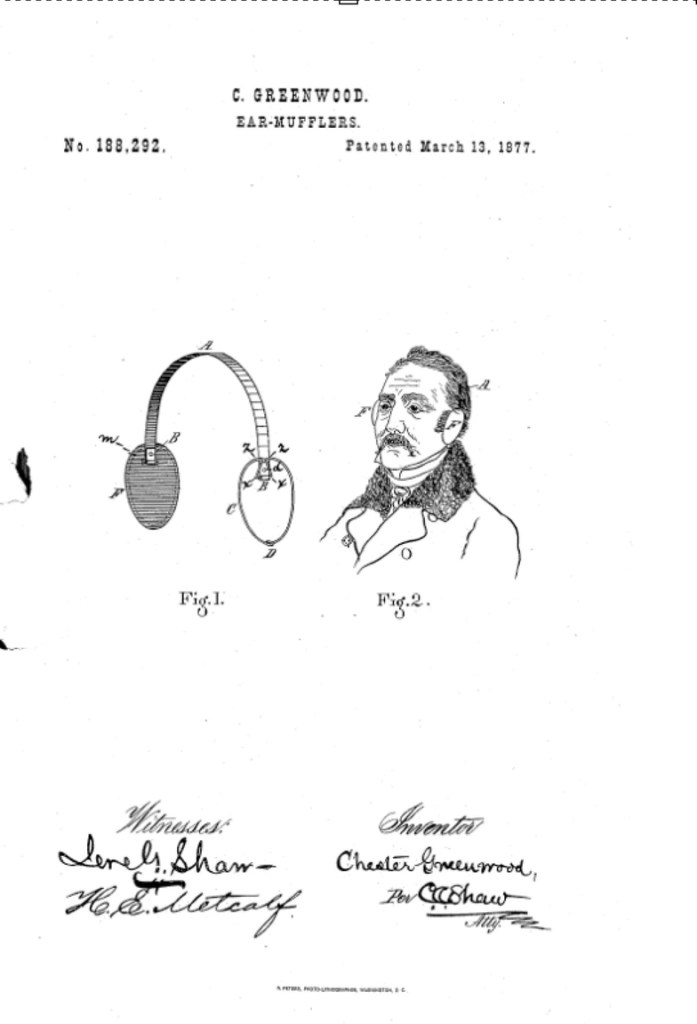When Chester Greenwood came up with his famous invention 136 years ago, he had to protect his idea by filing paperwork on his invention, titled “Improvement in ear-mufflers,” with the U.S. Patent and Trademark Office.
The following is language from Greenwood’s original patent application, which resulted in patent No. 188292
“Be it known that I, Chester Greenwood, of Farmington, in the county of Franklin and State of Maine, have invented certain new and useful Improvements in Ear-Mufflers, of which the following is a description sufficiently full, clear, and exact to enable any person skilled in the art or science to which my invention appertains to make and use the same.
“My invention relates to that class of earmufflers which are kept in contact with the ears by means of a spring, which forms the body, and also connects the pads of the muffier; and consists in a novel construction and arrangement of the parts, as hereinafter more fully set forth and claimed, by which a simpler and more effective device of this character may be produced than is now in ordinary use.”
Greenwood then goes on to explain, in five paragraphs, the specific parts of his device and how they worked, with frequent references to a drawing he submitted with his application.
He describes, in detail, the “body of the muffler, which consists of a flattened metallic spring, semicircular in shape, and having its ends bent or overlapped, and riveted down.”
He also describes the frames that held the pads in place, “a single piece of wire having its ends joined and bent into an oval shape. This wire passes through and works in the box or socket formed by the overlapped end of the spring, and is also bent, preventing the frame from moving laterally to an undue degree.”
As for the pads themselves, “the frame is covered with cloth, and may be also lined or covered with fur, wool, skin, or any other fibrous non-conductor of heat, as desired. The substance forming the inner side of the pad is provided with a slot, through which that part of the frame between the angles is connected with the overlapped end of the body.”
Greenwood then explains how the parts come together to make his ear-warming device work.
“In the use of my improvement the body is passed over the top of the head of the wearer, its contractile action causing the pads to press firmly against the ears, and protect them from cold in a manner which will be readily obvious to all conversant with such matters from the foregoing description.”
— Matt Hongoltz-Hetling
Send questions/comments to the editors.



Success. Please wait for the page to reload. If the page does not reload within 5 seconds, please refresh the page.
Enter your email and password to access comments.
Hi, to comment on stories you must . This profile is in addition to your subscription and website login.
Already have a commenting profile? .
Invalid username/password.
Please check your email to confirm and complete your registration.
Only subscribers are eligible to post comments. Please subscribe or login first for digital access. Here’s why.
Use the form below to reset your password. When you've submitted your account email, we will send an email with a reset code.